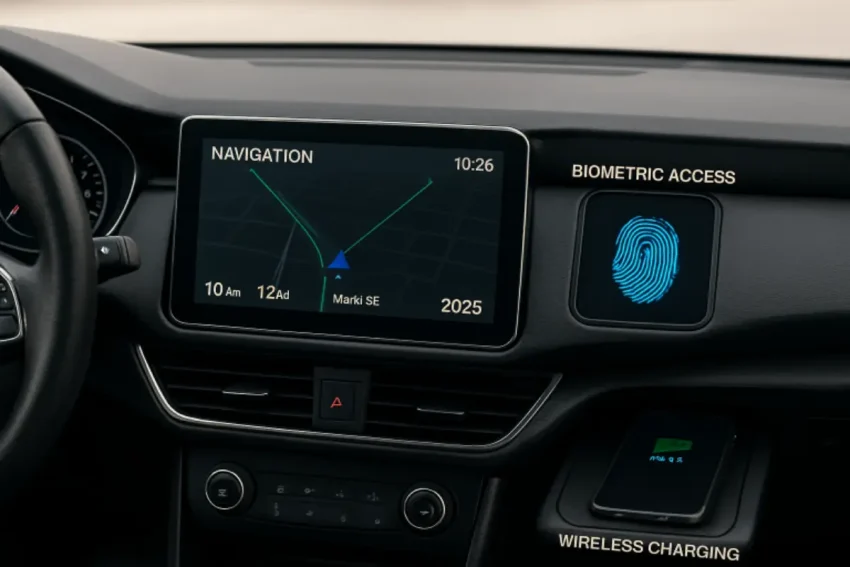Innovative Car Features Redefining the Driving Experience

As technology transforms the modern automobile, 2025 is set to become a landmark year for car innovation. This year’s latest vehicles are equipped with groundbreaking features to improve every aspect of the driving experience, offering unparalleled safety, convenience, and personal comfort to drivers and passengers alike. For drivers looking to take advantage of these advancements and elevate their time on the road, learn more about the newest vehicles and how they’re setting the standard for innovation and reliability in today’s automotive landscape.
The evolution of automotive technology extends well beyond flashy gadgets and brings real value to daily life. From smarter driver assistance technology and biometric access systems to wireless connectivity and the use of predictive analytics, these features are reshaping what drivers can expect from their cars. With AI integration, augmented reality displays, and next-generation power solutions, today’s vehicles are becoming safer, more efficient, and more adaptive than ever before, meeting the ever-evolving needs of consumers and providing a truly tailored driving experience.
Contents
Advanced Driver Assistance Systems (ADAS)
Advanced Driver Assistance Systems are now integral to vehicle safety and comfort, providing real-time monitoring and adjustments that prevent accidents and ease driver workload. Features like adaptive cruise control, lane-keeping assist, collision avoidance, and automatic emergency braking have shifted from being premium add-ons to becoming must-have standards in new vehicles.
Brands such as Ford and Tesla continue to push boundaries with offerings like BlueCruise and Autopilot, which use sophisticated sensors and machine learning to interpret the road, traffic, and driver behavior, leading to greater peace of mind for everyone on board. Kiplinger reports that adopting ADAS drastically reduces accident rates and makes driving more predictable and stress-free.
Biometric Access and Personalized Settings
Biometric technology is emerging as a game-changer in vehicle personalization and security. Recent models from Hyundai and Tesla are now equipped with facial recognition cameras and fingerprint scanners, allowing for instant, secure access to the vehicle. Once inside, these systems automatically load a driver’s custom preferences, including seating position, climate controls, and entertainment settings. This not only enhances comfort but also provides peace of mind by reducing the likelihood of unauthorized access.
Augmented Reality Displays and AI Assistants
Technological advancements are also transforming in-cabin interaction. Augmented reality (AR) head-up displays project navigation and key vehicle information onto the windshield, seamlessly integrating critical details into the driver’s line of sight.
AI-driven voice assistants empower drivers to control everything from navigation to entertainment through natural language commands, minimizing distractions and supporting a safer, more enjoyable journey. According to Associated Press, these systems are rapidly evolving, offering increasingly intuitive and responsive ways to interact with your vehicle.
Wireless Connectivity and Charging
Compatibility with Apple CarPlay and Android Auto now allows for seamless wireless integration of smartphones with vehicle infotainment systems, eliminating the hassle of tangled cords. Wireless charging pads in the latest models ensure that drivers’ devices stay powered up and ready for use at all times while maintaining a clean, uncluttered cabin environment.
This integration supports safer driving, as staying connected no longer means sacrificing focus or introducing unnecessary distractions. Consumer Reports notes that tech-savvy buyers greatly appreciate these features, prioritizing convenience and safety.
Predictive Maintenance and Vehicle-to-Home Power
Predictive maintenance is rapidly becoming a hallmark of the modern car, leveraging onboard sensors and data analytics to monitor the condition of critical vehicle components in real time. These systems alert drivers to potential faults or needed service before issues lead to breakdowns or expensive repairs, ensuring cars spend more time on the road and less in the shop.
On the power side, electric vehicles increasingly offer vehicle-to-home (V2H) capability, where the car’s battery can be tapped to provide backup electricity to homes during outages, making the vehicle an essential part of home energy resilience. For a deeper dive into how these features impact the automotive market, refer to reports by CNET.
Final Thoughts
The cars rolling out in 2025 mark a turning point in automotive innovation, focusing on making driving smarter, safer, and more engaging than ever before. Advanced safety features, biometric customization, AR displays, AI connectivity, and enhanced power solutions are not only redefining expectations—they are setting a new standard for what drivers want and need in a modern vehicle. These advances highlight how technology can fundamentally transform the day-to-day experience behind the wheel, promising a future where cars effortlessly adapt to the lives of their drivers and the world around them.



